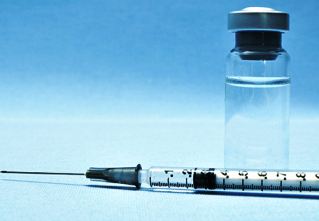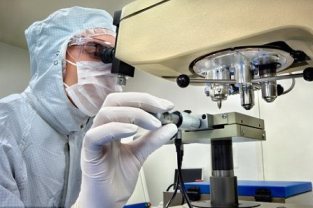In the increasingly complex and high-priced quest to find new medicines, immune system as with its unique power to prevent, cure and cause disease as deserves more attention. Vaccines, that works by triggering the immune system to generate antibodies, have saved millions of lives since they were discovered by Edward Jenner in 1796. They are rightfully described by World Health Organization (WHO) as the most efficient health intervention after safe water. But conventional vaccines give us only glimpse into the amazing power of our immune system. While it is out of balance, it destroys healthy cells, causing severe autoimmune diseases for example Type-1 diabetes or multiple sclerosis. Whilst it is exhausted, cancers and chronic infections can take hold. The immune system plays a central role in these and several other diseases.
Looking at advances in immunology, we are about to see a shift from Jenner's initial preventive vaccines to an era where a next creation of vaccines successfully orchestrate our bodies' defences to cure and eliminate diseases.
We should thankful to the work of Professor Ralph Steinman, 2011 Nobel Prize winner, we now understand that specific immune system cells, known as dendritic cells, instruct other cells to either fight diseases or to initiate tolerance to the body's own proteins that it may erroneously attack. Various other scientists have added complementary knowledge that has enabled vaccines to go far beyond the prevention of infections. Certainly, there are now 527 vaccines in clinical development covering not only 49 infectious diseases but also 28 types of cancers, ten autoimmune diseases or allergies and 17 other diseases.
Four emerging next-generation vaccine technologies are notable for their potential to unlock the power of an immune system: DNA; computational antigen discovery; immune response boosting nanoparticles; and adjuvants.
DNA vaccines

In cancer, DNA vaccines carry genetic instructions to allow the production of proteins that are specific to tumour cells. Upon vaccination, target cells start to generate these proteins in much larger quantities. The vaccine-induced proteins (antigen) are danger signals to immune system, which elicit a more effective, amplified immune attack on the tumour. Even as the principle of DNA vaccines has been confirmed in human trials, selective delivery of DNA vaccines to the target cells should be accomplished to commercialize this approach safely and effectively.
The power of antibodies
For several diseases, effective antibodies may be found in the blood of patients. Though, the concentration levels of these antibodies are often too low to stop the disease. To help the immune system generate more of these antibodies, an alarm signal (antigen) is necessary. Researchers, for example Professor William Schief, at The Scripps Research Institute, are developing methods to recognize these unknown antigens. They visualize antibodies found in the blood of infected patients and use computational biology to make out the antigen sequences that effectively bind to these antibodies. This and alike approaches open up prevention strategies for unresolved infectious diseases for example HIV, hepatitis C or tuberculosis. The major challenge is that the antigen molecules that have been discovered are extremely small to be recognized by the immune system and, hence, larger carriers are needed to present these antigens to immune cells.
Immune-boosting molecules
We now know that dendritic cells regulate the strength of immune system's response via specific proteins called toll-like receptors (TLR). Stimulating these TLRs can increase the immune response dramatically. Novel cancer vaccine candidates be able to use the improve effect of TLR-targeting molecules and use other immune-modulated strategies to strengthen the immune response to the cancer. Though, these potent immune-boosting molecules can have severe side effects, particularly if their delivery is not targeted directly to the dendritic cells.
Nanoparticle vaccines

Nanoparticle vaccines have the potential to bring together all repayment of the technologies discussed up to now. Their size is similar to that of naturally occurring pathogens as in viruses, which facilitate preferential absorption by dendritic cells. Novel manufacturing methods, developed at the laboratories of Professor Robert Langer at MIT, allow design of the nanoparticle surface structure, payload and discharge characteristics to induce the desired immune response. For instance, novel antigens can be displayed on the outside shell of the particle and an immune-boosting adjuvant encapsulated inside. Components, antigen and booster, reach immune cell at the same time and induce a powerful antibody immune response. The vaccine and immunotherapy developer can also utilize particles to design a "tolerogenic" vaccine that stops erroneous immune attacks. In instance, a molecule signalling tolerance is encapsulated together with a benign antigen; for instance, an allergen. The nanoparticles deliver tolerogenic instructions inside target cells so that an immune system stops overreacting to the allergen, efficiently blunting the allergy.
In clinical and preclinical experiments, nanoparticle vaccines have shown their potential to shape immune responses to influenza viruses, pneumococcal bacteria, cancer linked antigens, nicotine, house dust mites and antigens causing symptoms of various sclerosis.
The next decades would see a radical change in our thinking about vaccines. New categories of therapeutic and tolerogenic vaccines would be added to improved preventive vaccines. Together, they will safely harness previously underestimate power of the body's own defences.